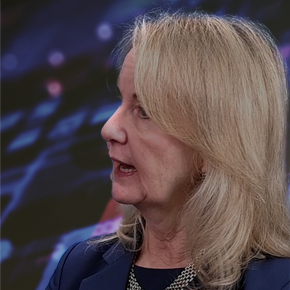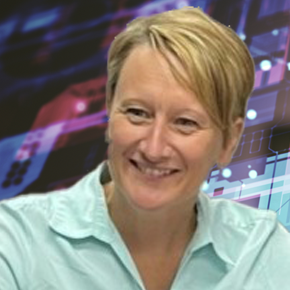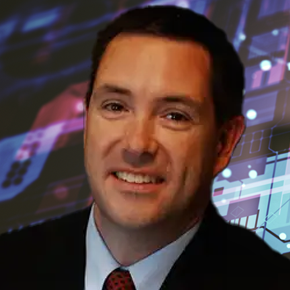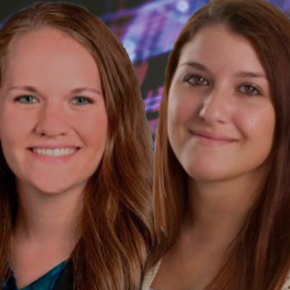January 12, 2024
Digital Twinning in Manufacturing is Winning

Transcript
What Are Digital Twins?
Digital twins are virtual representations of physical objects that provide a digital replica or twin of your physical asset. Manufacturing companies have used digital twins in product development for many years to advance prototype, to store historical data, and to give supply chain partners a digital representation of the physical product they’re supposed to receive. These were the main use cases for digital twin technology until automation, machine learning and artificial intelligence disrupted the entire product development process. Now, digital twinning is entering into a new era where product development teams have a greater than ever ability to test their designs in a virtual environment and optimize for the most efficient manufacturing processes, the leanest supply chain, or the lowest carbon impact.
Cost Benefit of Digital Twins
These are the benefits of digital twins, but there are costs too. Unless a digital twin program comes with organization-wide digital transformation, a company’s projected growth in virtual reality will never make it to the real world. The expert on this topic is Stephanie Feraday, CEO of aPriori, and industry leader in the digital transformation of manufacturing. I talked to Stephanie Feraday at aPriori’s latest insights conference, where she focused on the topic of digital twins and how in this market of high competition, supply chain instability and rising capital costs, digital transformation is more important than ever before. Here’s our conversation on why digital twinning is winning in manufacturing today.
What Problems Do Digital Twins Solve?
Leah Archibald: Stephanie, you just got off the stage giving your main keynote about where companies are going now on their transformation journey with the digital thread. What is the main message that you want to give to manufacturing companies?
Stephanie Feraday: There’s a lot going on in the world today. Geopolitical risks, supply chain issues, shortage of labor, right? These are all big challenges that companies are facing. And over the past few years, companies have taken small steps, incremental steps to optimize their businesses. But as we saw during COVID and coming out of that, it’s not enough. It didn’t enable them to respond fast enough or flexibly enough. So what we’re really seeing is that for digital transformation to really make that happen, it’s not just about the digital twin, but it’s about bringing that digital twin to market. So it’s the digital twin with the digital processes and the digital factory. And by doing that, companies can achieve amazing things: accelerate time to market, reduce costs, reduce carbon impact.
Case Study for Digital Twinning
Stephanie Feraday: We saw one customer, it was a few years ago when the Trump tariffs came in. They had done an analysis and they’d moved their manufacturing facilities from China to Mexico, and they thought it was going to be cheaper. And they got up and running, and in fact, it wasn’t. It was more expensive.
And so they’d done all that move and it increased the cost. So they were rapidly jumping to use digital factories to give them a better multi-factored analysis of what the impact of those changes would be on cost. Changing plants, changing materials, changing labor, changing machines.
Leah Archibald: And what did that look like for their business when they got on board with leveraging the digital thread throughout product design, sourcing, decision making? How did that transform their operation?
Stephanie Feraday: Well, the interesting thing about a digital thread is that it connects people. So starting with engineering, where there’s a lot of data coming out of the CAD model, moving it to the PLM system that’s managing the digital twin itself. But you haven’t taken it through to how it’s going to going to be produced. Which has a huge impact on everything from cost to carbon impact. And so by having the digital thread of the manufacturing processes and facilities with the digital twin, you’re able to give people across the product development cycle, starting with engineering, going to sourcing, manufacturing, and suppliers, a common view. A shared view. And that enables them to all act in concert and magnify the impact. So it increases the volume of cost savings, it accelerates their time to market. It just has a tremendous benefits.
Capital Investments and Digital Twins
Leah Archibald: So that’s what we do with aPriori. That’s what customers are able to achieve. What is the hurdle that they have to get over? And I’m thinking specifically about capital considerations in an inflationary moment.
Stephanie Feraday: Yes. Capital considerations are definitely a big deal. Like that company I mentioned that moved through China, to Mexico, you need to think about the changes you’re going to make with your capital investments to not only get your products out the door, but to drive automation. Because it may not just be the machines you’re investing in. It may be the kinds of machines to do things differently, not the same. So capital investments are becoming more challenging. You’ve got to be much more considerate of it. And it’s not just capital investments from a machine perspective, but it’s also in things like tooling costs. As you’re making things, not only what’s the piece part cost, but what’s the tooling cost and how’s that going to impact your product profitability further down the line.
Leah Archibald: And if you don’t have aPriori helping you calculate your tooling costs, it’s just a guess.
Stephanie Feraday: It is.
Leah Archibald: And it could end up being a sunk cost.
Stephanie Feraday: Right. The technology really needs to align with a corporate digital strategy. When you run into a hard problem that you can’t solve, you’ve got to change. And I think that’s what we see happening. Product life cycles are shortening. EV products are changing how products are made and what companies can do. So there are many market forces that are driving companies to change and change fast because they don’t have a choice if they want to remain competitive.







